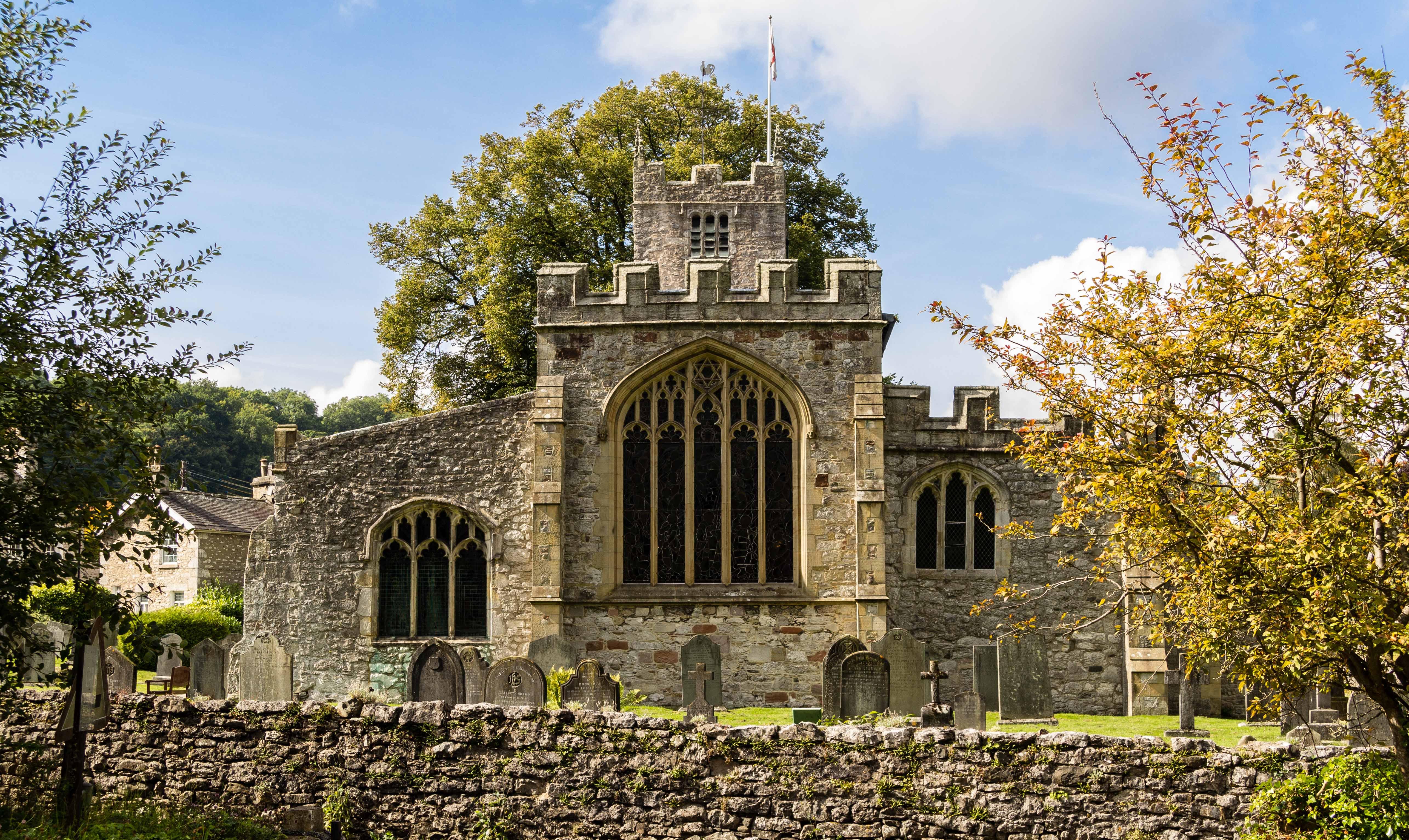St James
Arnside, Cumbria
For a small village church, St James has an amazing wealth of stained glass.

The beautiful Grade I church we see today, situated by the River Bela, is the result of additions and adaptations through the centuries.
Beetham, Cumbria
Mass dials, masons marks, medieval stained glass, a fine Forster & Andrews organ, tower bells and gravestones dating to the 17th century provide fascinating glimpses into the history of the church, the village and the surrounding area.
Built in early and late Norman and Early English Decorated style. The stonework of the lower part of the tower is 11th and 12th century, but the top part containing the tower bells was added in the 16th century. Saxon stonework has been identified in the base of the tower.
Fragments of medieval glass can be found incorporated in windows in the Lady Chapel. One window depicts Henry Bolingbroke in the role he later filled, King Henry IV. Included in the window are the Arms of the Stanley Family. Thomas Stanley was created first Earl of Derby by King Henry VII. There is a Stanley Street in Beetham to this day. A more recent window commemorates the Clegg brothers who were killed at Galipoli within weeks of each other in 1915.
The Middleton Tomb, shows two effigies, a man in armour and a woman wearing a cloak. They are thought to be Sir Robert Middleton of Leighton Hall and his wife, Anne, daughter of Roger Beetham.
The chancel, with its High Altar and choir stalls is divided from the nave by the Victorian chancel screen, erected in memory of Isabella, wife of John Thexton (vicar 1811–1844). The previous vicar William Hutton (1762–1811) was a nationally acknowledged chronicler of provincial life in the time of King George III.
There are some interesting examples of Masons marks especially on the columns and arches between the nave and the north aisle.
The lead lined stone font dates from the 12th century, but contains two wooden panels dated 1636. The Victorian steeple lid, is displayed in the north aisle.
The church has long been the focus of village life. The local market was held in the churchyard up until the middle of the 17th century, following the granting of a charter for a market and a fair in the village by Edward IV in about 1480.
The high ceiling, with its clerestory windows, the spacious nave and side aisles, together with the chancel and Lady Chapel provide a quiet and restful atmosphere for solemn contemplation or just to rest weary feet.
Arnside, Cumbria
For a small village church, St James has an amazing wealth of stained glass.
Heversham, Cumbria
Welcome to St Peter’s, the oldest site of worship in the old county of Westmorland and the building we see today reflects its long and fascinating history.
Burton in Kendal, Cumbria
Our traditional Westmorland church is a Grade I listed building which dates from the 12th century.